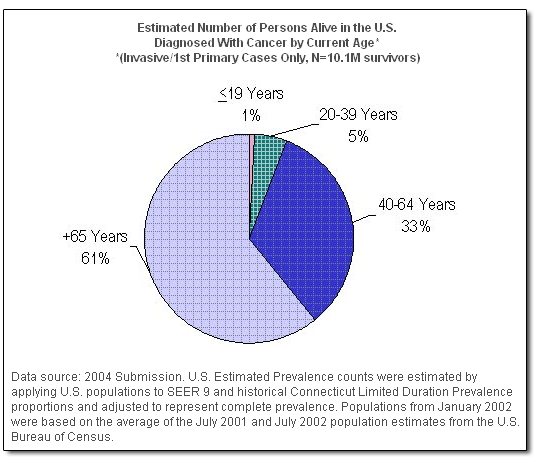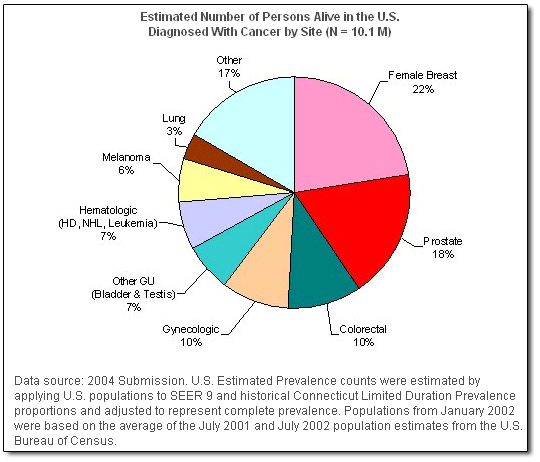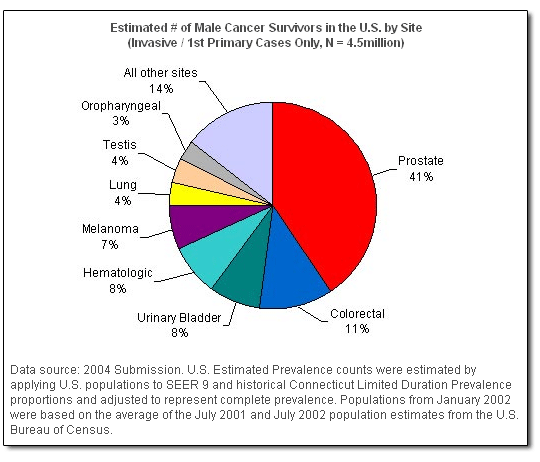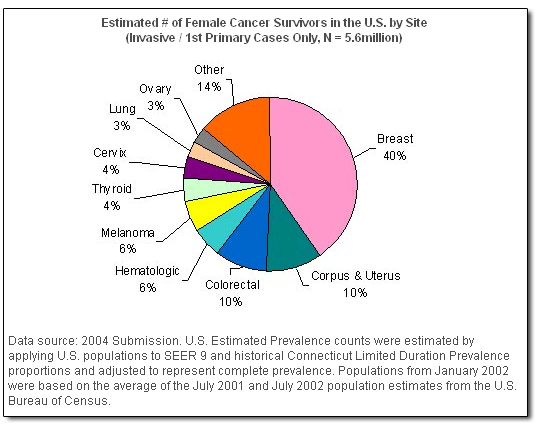
A cropped image of a bar graph showing increasing numbers of cancer survivors in the U.S.A cropped image of a bar graph showing increasing numbers of cancer survivors in the U.S.
The large increase in the numbers of children surviving cancer has been hailed as one of the great successes of this nation’s investment in biomedical research. Many children who otherwise would have died within weeks or months of a cancer diagnosis are now living longer, with life expectancies sometimes extending into adulthood. However, it is becoming increasingly clear that extending lifespan and preserving quality of life for survivors will depend on screening for, and the managing of, the potential long-term effects of therapy.
Because childhood cancer survivors often lack information about the treatments they received and the long-term health implications of those treatments, researchers at Texas Children’s Cancer Center and Baylor College of Medicine’s Center for Collaborative and Interactive Technologies in Houston, Texas, in conjunction with the Children’s Oncology Group (COG), are developing an interactive internet resource, called Passport For Care (PFC).
“The Passport For Care is designed to address the fact that survivors of childhood cancer change physicians frequently, may not be aware of the specific therapies they received, and often seek care from physicians who are unfamiliar with their disease and its treatment,” said David Poplack, M.D., director of Texas Children’s Cancer Center and a co-developer of the PFC. “Developing portable and accessible summaries of treatment and potential health risks enables survivors to actively participate in their follow-up care.”
Survivors of childhood cancer are particularly at risk for second malignancies and other long-term complications of therapy, including learning and cognitive deficits; cardiac and cardiovascular problems; growth, endocrine and fertility problems; and hepatic, pulmonary, and renal dysfunction. Recent studies suggest that between two-thirds and three-quarters of survivors will experience at least one of these late effects, some of which can take years to develop.
Consistent medical follow-up for cancer survivors is confounded by several factors: Americans change primary healthcare providers an average of every two years; survivors are often unfamiliar with the details of their treatment history and are unable to accurately share pertinent medical information with their healthcare providers; and primary care providers are often unfamiliar with cancer treatments or with recommendations regarding screening for long-term complications of cancer and cancer therapy.
To address many of these problems, researchers are designing the PFC Web site is being designed to include:
- An end-of-treatment care summary, completed by the treating institution, and available to the survivor, that can be securely shared with providers at the direction of the survivor and used to generate the individualized recommendations for each survivor.
- A guidelines generator that assembles recommendations for follow-up care customized to each survivor, based on his or her treatment history. Generated from the detailed records of surgery, chemotherapy and/or radiation treatments that are included in the database, as well as age and gender information, the PFC will inform a survivor about the likelihood of late effects for which he or she is at risk.
- An alert system that provides survivors with updated changes in their individualized surveillance guidelines as new information becomes available.
- Individualized survivor education materials that are customized to the needs of each patient based on their disease and its treatment. Survivors will be more readily able to access survivorship clinics and other resources that they specifically need.
- An online survivor forum and a section for survivor news and stories.
- Secure Health Insurance Portability and Accountability Act (HIPPA)-compliant system features that ensure privacy and confidentiality.
According to Poplack, “the Passport For Care essentially addresses what the 2003 Institute of Medicine report (Childhood Cancer Survivorship: Improving Care and Quality of Life) indicated was necessary to empower survivors—enabling them to appropriate long-term follow-up. The process of developing an online database for the Care Summary and COG guidelines is on track. Testing will soon begin in the Long-Term Survivor Clinic at Texas Children’s Cancer Center, followed by a pilot at three additional survivorship clinics around the country, with the eventual plan to implement the PFC at all COG institutions.
According to Marc Horowitz, M.D., professor of Pediatrics at Texas Children’s Cancer Center and a co-developer of the PFC, “While the Passport For Care is initially being developed for survivors of childhood cancer, the hope is to ultimately expand the program to adult cancer survivors as well.
Animation/Video
| This animation requires the Flash plug-in. If you do not have the plug-in, please click here to install. | |
Text Transcript
Bar Graph: Estimated Number Cancer Survivors in the United States from 1971 to 2002
1971: 2,995,741 Cancer Survivors
1972: 3,134,865 Cancer Survivors
1973: 3,299,981 Cancer Survivors
1974: 3,447,010 Cancer Survivors
1975: 3,630,812 Cancer Survivors
1976: 3,805,837 Cancer Survivors
1977: 3,993,109 Cancer Survivors
1978: 4,192,377 Cancer Survivors
1979: 4,391,529 Cancer Survivors
1980: 4,576,763 Cancer Survivors
1981: 4,745,108 Cancer Survivors
1982: 4,943,233 Cancer Survivors
1983: 5,127,487 Cancer Survivors
1984: 5,320,663 Cancer Survivors
1985: 5,536,992 Cancer Survivors
1986: 5,731,770 Cancer Survivors
1987: 5,944,365 Cancer Survivors
1988: 6,168,724 Cancer Survivors
1989: 6,386,491 Cancer Survivors
1990: 6,598,821 Cancer Survivors
1991: 6,873,628 Cancer Survivors
1992: 7,193,377 Cancer Survivors
1993: 7,527,947 Cancer Survivors
1994: 7,849,228 Cancer Survivors
1995: 8,182,427 Cancer Survivors
1996: 8,412,650 Cancer Survivors
1997: 8,659,323 Cancer Survivors
1998: 8,946,912 Cancer Survivors
1999: 9,235,540 Cancer Survivors
2000: 9,555,312 Cancer Survivors
2001: 9,809,040 Cancer Survivors
Data Source: November 2002 Submission. U.S. Estimated Prevalence counts were estimated by applying U.S. populations to SEER 9 Limited Duration Prevalence proportions. Populations from January 2000 were based on the average of the July 2000 population estimates from the U.S. Bureau of Census.
Audio Clips
- Patricia A. Ganz, M.D., a medical oncologist at the UCLA School of Public Health, is a pioneer in the assessment of quality of life for cancer patients. She discusses aspects of her work in the audio excerpt that follows:( Audio – Length: 01:02 – 629 KB )
Text Transcript
Patricia A. Ganz, M.D., a medical oncologist at the UCLA School of Public Health, is a pioneer in the assessment of quality of life for cancer patients. She discusses aspects of her work in the audio excerpt that follows:
“I focus on breast cancer, and when I see a new patient and discuss the treatment plan, I write an initial consultation note that is sent to the referring physician. But the treatment course for that individual might be six or nine months ahead–they need to finish their chemotherapy, they need to get their radiation and when they’re finally through with that acute piece they will go onto some hormonal therapy, which might last as long as ten years.”
- Dr. Ganz discusses additional aspects of survivorship and quality of life.( Audio – Length: 00:51 – 1.06 MB )
Text Transcript
Dr. Ganz discusses additional aspects of survivorship and quality of life.
” But at the end of treatment, we seldom write another formal note that says, ‘Mrs. Jones received this much of this drug, that much of that drug, this many weeks of radiation. She tolerated it extremely well or she had these side effects and needed to be in the hospital and we’re going to have to look out for these late effects.’ It’s seldom communicated in that kind of transparent way to the patient’s primary care physician, and the patient doesn’t get a record of treatment either.”
Photos/Stills
1: Estimated Number of Persons Alive in the U.S., Diagnosed With Cancer by Current Age*
*(Invasive/1st Primary Cases Only, N=10.1M survivors)

2. Estimated Number of Persons Alive in the U.S., Diagnosed With Cancer by Site (N = 10.1 M)

3. Estimated # of Male Cancer Survivors in the U.S. by Site, (Invasive / 1st Primary Cases Only, N = 4.5million)

4. Estimated # of Female Cancer Survivors in the U.S. by Site, (Invasive / 1st Primary Cases Only, N = 5.6million)

 NCI NewsCenter
NCI NewsCenter NCI Budget Data
NCI Budget Data Visuals Online
Visuals Online NCI Fact Sheets
NCI Fact Sheets Understanding Cancer Series
Understanding Cancer Series